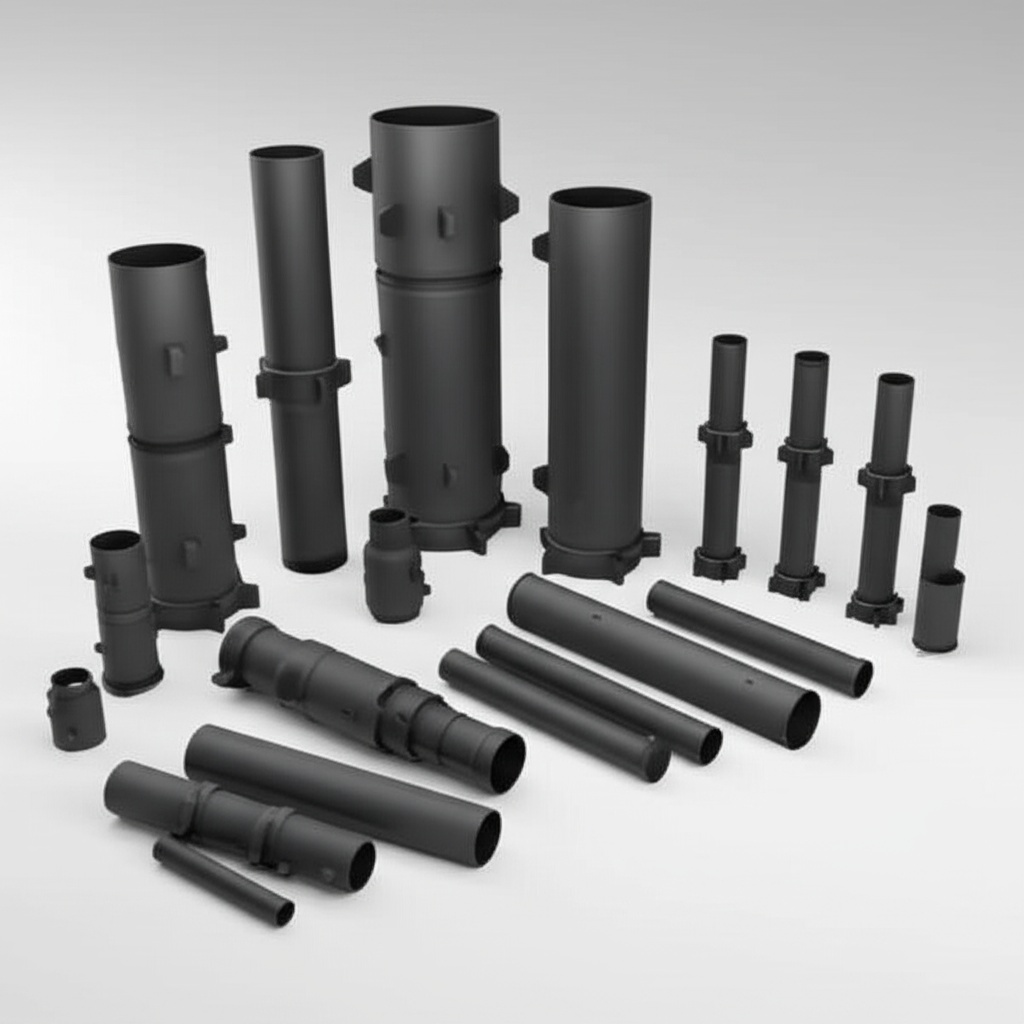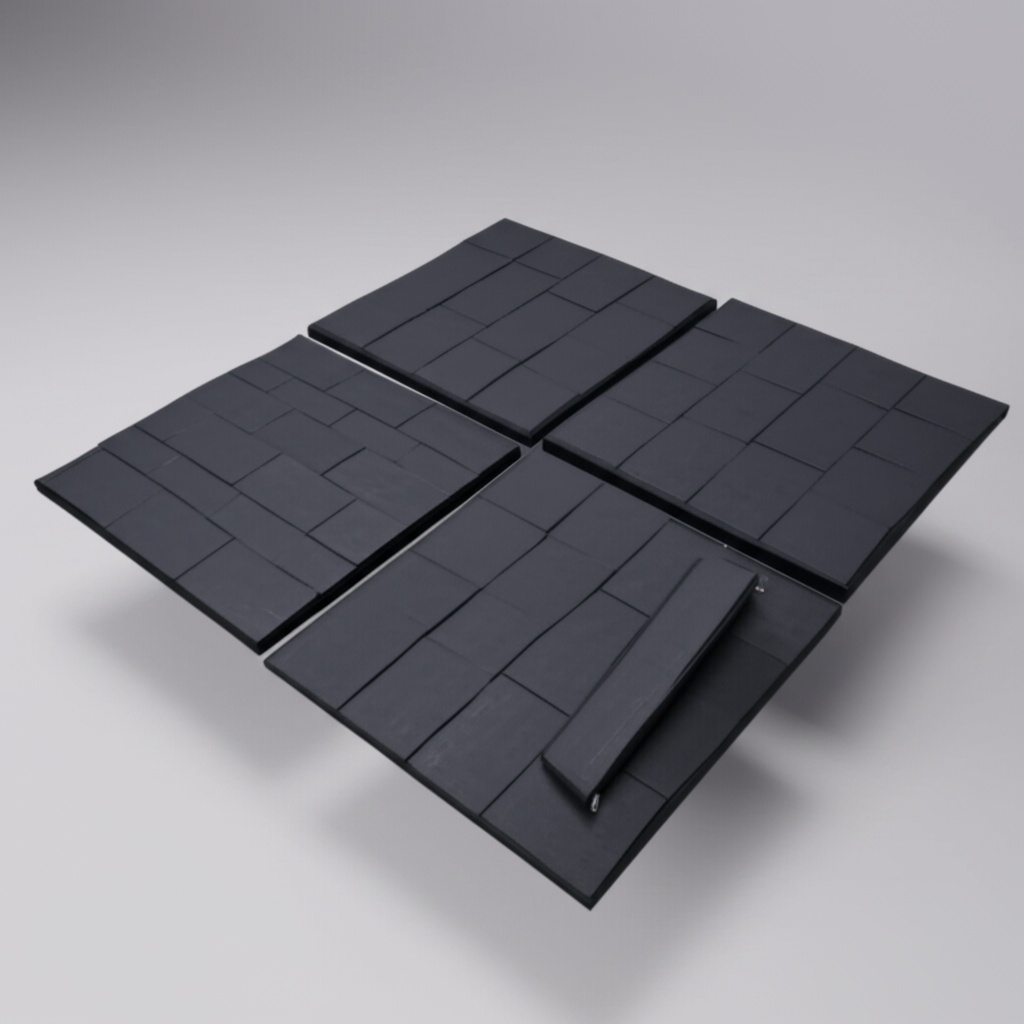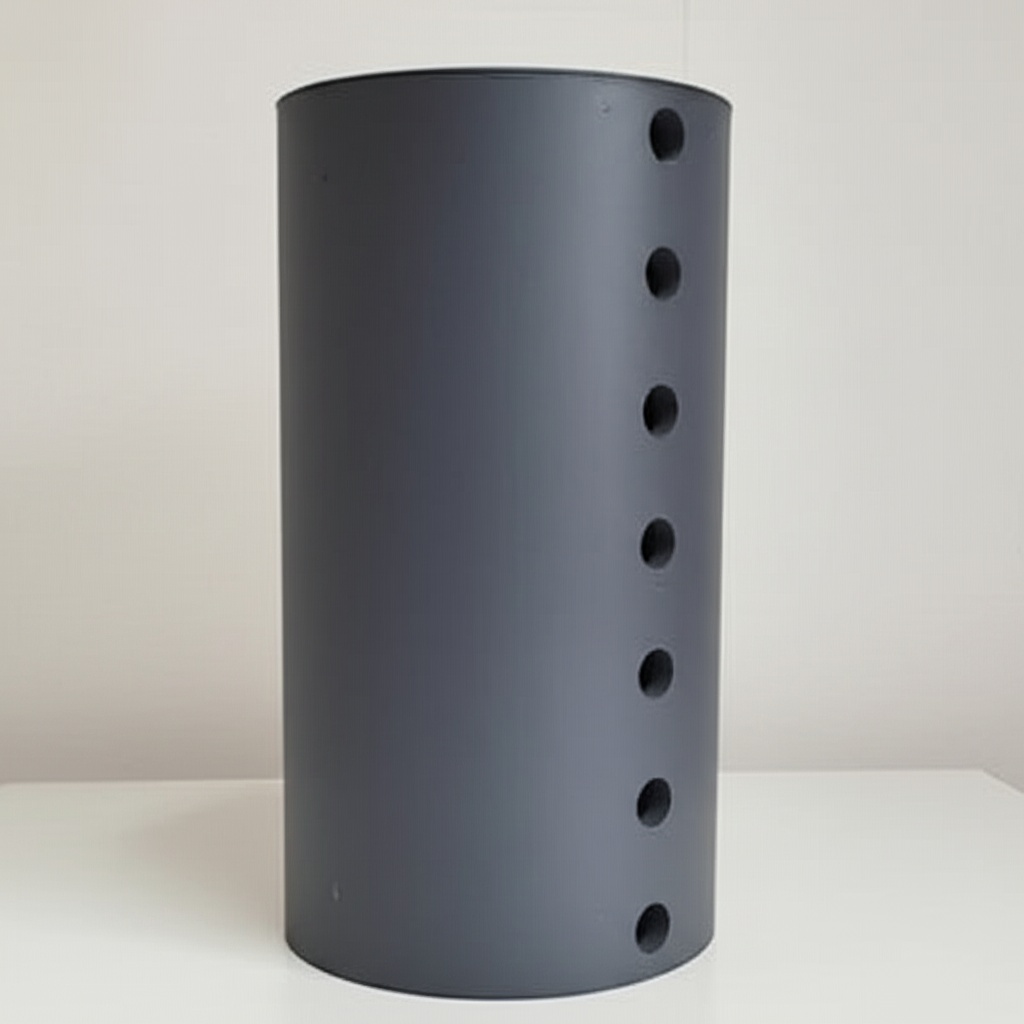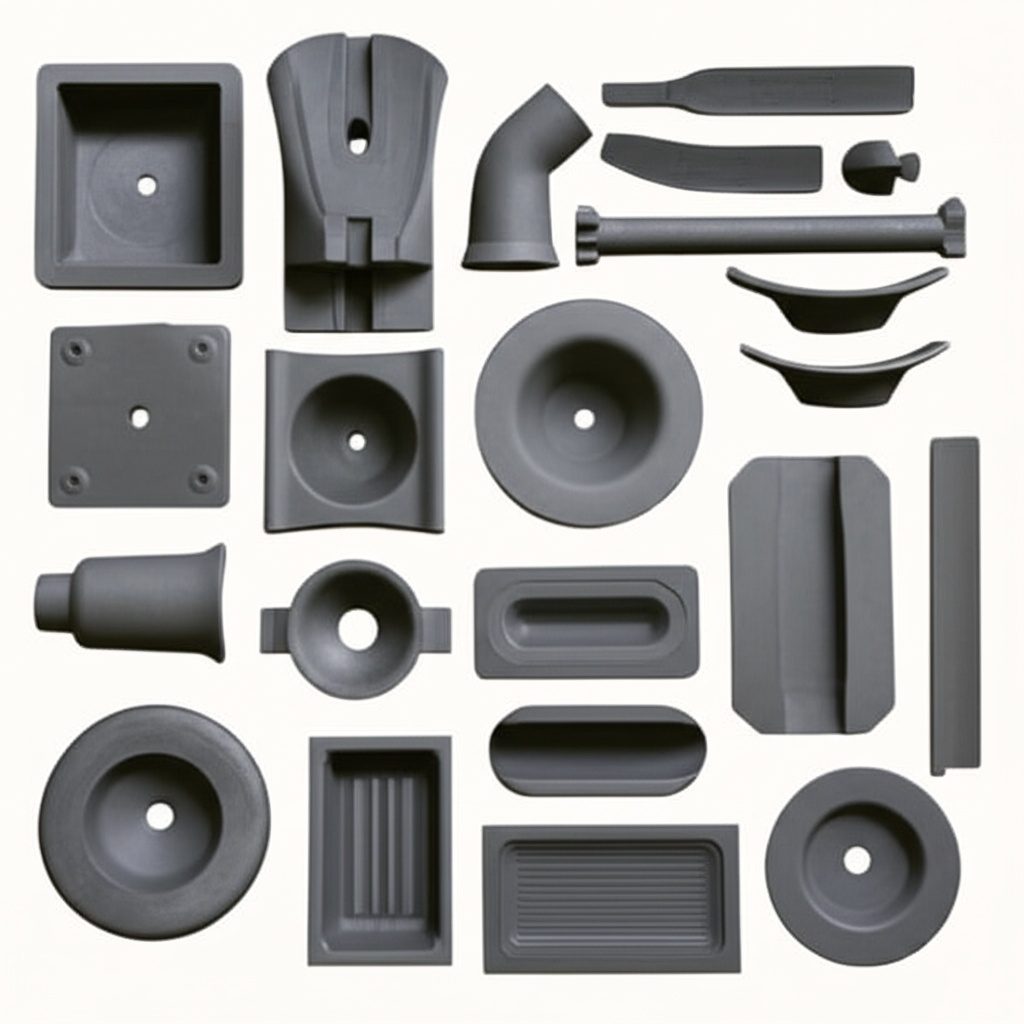SiC voor geavanceerde waterzuiveringsoplossingen

Haalbare toleranties en maatnauwkeurigheid:
SiC for Advanced Water Treatment Solutions: Purity & Performance
1. Inleiding: De noodzaak van geavanceerde waterzuivering en de opkomst van SiC
Toegang tot schoon en veilig water is essentieel voor de menselijke gezondheid, industriële vooruitgang en ecologische duurzaamheid. De groeiende bevolking, industrialisatie en klimaatverandering leggen echter ongekende druk op de wereldwijde waterbronnen. Verontreinigingen variërend van microbiële pathogenen en zware metalen tot persistente organische verontreinigende stoffen en microplastics vormen in toenemende mate een uitdaging voor conventionele waterbehandelingsmethoden. Deze escalerende crisis vereist een paradigmaverschuiving naar robuustere, efficiëntere en veerkrachtigere geavanceerde waterbehandelingsoplossingen. Traditionele materialen en processen schieten vaak tekort in termen van duurzaamheid, chemische bestendigheid of operationele efficiëntie, vooral bij het omgaan met agressieve waterchemie of strenge zuiverheidseisen.
In deze context komt siliciumcarbide (SiC), een geavanceerd keramisch materiaal, snel naar voren als een transformerende technologie. Aanvankelijk erkend om zijn uitzonderlijke hardheid en prestaties in toepassingen bij hoge temperaturen en hoge spanningen, toont SiC nu zijn diepgaande potentieel om water- en afvalwaterzuivering te revolutioneren. De unieke combinatie van fysische en chemische eigenschappen maakt het een ideale kandidaat voor de productie van hoogwaardige membranen, filters en andere kritieke componenten in waterzuiveringssystemen. Voor industrieën variërend van de productie van halfgeleiders, die ultrapuur water vereisen, tot de gemeentelijke afvalwaterzuivering die gericht is op veilige lozing of hergebruik, biedt SiC een aantrekkelijke waardepropositie: verbeterde prestaties, een langere operationele levensduur en vaak lagere totale eigendomskosten. Deze blogpost gaat dieper in op de veelzijdige rol van siliciumcarbide in geavanceerde waterbehandeling en onderzoekt de voordelen, toepassingen en de kritieke overwegingen voor inkoopprofessionals, ingenieurs en besluitvormers bij het benutten van dit geavanceerde materiaal.
2. Siliciumcarbide begrijpen: een materiaal dat geschikt is voor waterzuiverheid
Siliciumcarbide (SiC) is een synthetische kristallijne verbinding van silicium en koolstof. De sterke covalente binding geeft het uitzonderlijke fysische en chemische eigenschappen, waardoor het een zeer gewilde technische keramiek is voor veeleisende omgevingen. Hoewel de toepassingen in schuurmiddelen, vuurvaste materialen en vermogenselektronica goed zijn vastgesteld, zijn de kenmerken ervan ook uniek geschikt voor de uitdagingen van geavanceerde waterbehandeling.
Belangrijke eigenschappen van SiC die relevant zijn voor waterzuivering zijn onder meer:
- Uitzonderlijke hardheid en sterkte: SiC is een van de hardste commercieel verkrijgbare materialen, dat de hardheid van diamant benadert (Mohs-schaal 9,0-9,5). Dit vertaalt zich in een uitstekende slijt- en slijtvastheid, cruciaal voor componenten die water met deeltjes behandelen of die onderhevig zijn aan frequente reinigingscycli.
- Chemische inertie: SiC vertoont een uitstekende weerstand tegen een breed spectrum aan chemicaliën, waaronder sterke zuren, basen en oxidatiemiddelen, over een breed temperatuurbereik. Deze chemische stabiliteit garandeert de levensduur en integriteit van SiC-componenten, zelfs in corrosieve watermatrices, in tegenstelling tot veel polymere of metalen alternatieven.
- Thermische stabiliteit en schokbestendigheid: SiC is bestand tegen hoge temperaturen (tot 1600 °C of hoger in gecontroleerde atmosferen) en snelle temperatuurschommelingen zonder significante degradatie of verlies van mechanische eigenschappen. Dit is gunstig voor stoomsterilisatie of processen met heetwaterstromen.
- Hoge thermische geleidbaarheid: Hoewel het niet altijd een primaire drijfveer is bij waterbehandeling, kan de goede thermische geleidbaarheid in bepaalde toepassingen voordelig zijn, waarbij warmte-uitwisseling of temperatuurregeling binnen het behandelingsproces een rol speelt.
- Regelbare porositeit en oppervlakte-eigenschappen: Geavanceerde productietechnieken maken de productie van poreuze SiC-structuren mogelijk, zoals membranen en filters, met nauwkeurig gecontroleerde poriegroottes en -verdelingen. Bovendien kunnen SiC-oppervlakken worden gemodificeerd om specifieke functionaliteiten te verbeteren, zoals hydrofiliteit of katalytische activiteit.
- Biocompatibiliteit en niet-toxiciteit: SiC wordt over het algemeen als biocompatibel beschouwd en loogt geen schadelijke stoffen uit, waardoor het geschikt is voor toepassingen die zeer zuiver water vereisen, zoals in de farmaceutische en voedingsmiddelen- en drankenindustrie.
Deze intrinsieke eigenschappen positioneren siliciumcarbide als een superieur materiaal voor de ontwikkeling van waterfiltratiecomponenten van de volgende generatie die de beperkingen van traditionele materialen kunnen overwinnen, en verbeterde prestaties, betrouwbaarheid en operationele levensduur bieden in de zoektocht naar waterzuiverheid.
3. Siliciumcarbide-membranen en -filters: de kern van moderne waterzuivering
De meest impactvolle toepassing van siliciumcarbide in waterbehandeling is in de fabricage van SiC-keramische membranen en robuuste filters. Deze componenten vormen het hart van veel geavanceerde filtratiesystemen en bieden scheidingsmogelijkheden die traditionele media overtreffen in uitdagende omgevingen. SiC-membranen worden doorgaans vervaardigd via processen zoals sinteren of reactiehechting, die een nauwkeurige controle over de microstructuur mogelijk maken, met name de poriegrootte en porositeit - kritieke parameters voor effectieve filtratie.
Soorten SiC-filtratiecomponenten zijn onder andere:
- Microfiltratie (MF)-membranen: SiC MF-membranen hebben typisch poriegroottes variërend van 0,1 tot 10 micrometer. Ze zijn zeer effectief voor het verwijderen van zwevende stoffen, bacteriën en grotere colloïden. Hun stijfheid en sterkte maken agressieve terugspoeling en reiniging mogelijk, waardoor hoge fluxsnelheden gedurende langere perioden worden gehandhaafd.
- Ultrafiltratie (UF)-membranen: Met poriegroottes tussen 0,01 en 0,1 micrometer kunnen SiC UF-membranen virussen, macromoleculen en fijnere colloïdale deeltjes verwijderen. Ze worden steeds vaker gebruikt als voorbehandeling voor omgekeerde osmose (RO) en bij de productie van hoogwaardig effluent.
- Vlakke plaat- en buismembranen: SiC-membranen zijn verkrijgbaar in verschillende configuraties. Vlakke membraanplaten bieden een hoge verpakkingsdichtheid, terwijl buisvormige SiC-membranen bekend staan om hun robuustheid bij het hanteren van voedingswater met een hoog vastestofgehalte, waardoor ze ideaal zijn voor veeleisende industriële afvalwatertoepassingen. Meerkanalenbuizen zijn ook gebruikelijk voor een groter oppervlak per element.
- Poreuze SiC-ondersteuningsstructuren: Naast de actieve membraanlaag kan dicht of poreus SiC dienen als zeer stabiele en chemisch resistente ondersteuning voor andere katalytische of scheidingsmaterialen in gespecialiseerde waterbehandelingsreactoren.
- Dead-end- en cross-flow-filters: SiC-filters kunnen worden gebruikt bij zowel dead-end-filtratie (waarbij al het water door het filtermedium gaat) als cross-flow-filtratie (waarbij de voedingsstroom tangentieel over het membraanoppervlak stroomt, waardoor de opbouw van een koeklaag wordt geminimaliseerd). De duurzaamheid van SiC blinkt uit in cross-flow-systemen, die vaak bij hogere snelheden en drukken werken.
Het operationele mechanisme van SiC-membranen berust op size-exclusion, waarbij deeltjes die groter zijn dan de poriën van het membraan worden vastgehouden. De eigenschappen van het materiaal verbeteren dit proces echter aanzienlijk. De inherente hydrofiliteit (die verder kan worden afgestemd) van SiC-oppervlakken kan organische vervuiling verminderen, een veelvoorkomend probleem bij polymere membranen. De mogelijkheid om bestand te zijn tegen agressieve chemische reiniging (bijv. met sterke oxidatiemiddelen of extreme pH-oplossingen) en hoge temperaturen (stoomsterilisatie) maakt effectieve regeneratie en aanhoudende hoge fluxsnelheden mogelijk. Dit maakt siliciumcarbide filtratietechnologie een game-changer voor industrieën die worstelen met moeilijk te behandelen waterbronnen of die uitzonderlijke filtraatkwaliteit en operationele betrouwbaarheid vereisen.
4. Ongeëvenaarde voordelen: waarom SiC uitblinkt in waterzuiveringssystemen
De toepassing van siliciumcarbide in waterzuiveringssystemen wordt gedreven door een overtuigende reeks voordelen ten opzichte van conventionele materialen zoals polymeren, roestvrij staal of zelfs andere keramiek zoals alumina of zirconia in bepaalde opzichten. Deze voordelen vertalen zich in een verbeterde efficiëntie, een langere levensduur en vaak lagere operationele uitgaven voor eindgebruikers, waaronder fabrikanten van halfgeleiders, autobedrijven en fabrikanten van vermogenselektronica.
Hier is een overzicht van de belangrijkste voordelen:
- Superieure chemische weerstand: SiC is vrijwel immuun voor degradatie door een breed pH-bereik (0-14) en agressieve chemicaliën, waaronder sterke zuren, basen, oplosmiddelen en oxidatiemiddelen (bijv. ozon, chloordioxide) die vaak worden gebruikt bij waterbehandeling en reinigingsprotocollen. Dit garandeert structurele integriteit en consistente prestaties waar andere materialen zouden corroderen of oplossen.
- Uitzonderlijke thermische stabiliteit: SiC-componenten kunnen bij hoge temperaturen werken en thermische schokken weerstaan. Dit maakt stoomsterilisatie, sanitatie met heet water en effectieve behandeling van hete industriële afvalstromen mogelijk zonder materiële schade of prestatieverlies.
- Hoge slijtvastheid: De extreme hardheid van SiC maakt de membranen en filters zeer bestand tegen slijtage door deeltjes in het voedingswater. Dit is met name cruciaal in toepassingen zoals mijnbouwafvalwater, industriële slurries of primaire effluentbehandeling, wat leidt tot een aanzienlijk langere levensduur van de componenten.
- Anti-vervuilingseigenschappen en hoge flux: SiC-oppervlakken, vaak van nature hydrofiel of ontworpen voor verbeterde hydrofiliteit, vertonen minder vervuilingstendensen in vergelijking met hydrofobe polymere membranen, vooral bij olie- of organischrijk water. Dit, in combinatie met de mogelijkheid om agressieve reinigingsregimes te implementeren, resulteert in aanhoudende hoge waterfluxsnelheden en een verminderde reinigingsfrequentie.
- Mechanische sterkte en duurzaamheid: SiC-membranen bezitten een hoge mechanische sterkte, waardoor ze bestand zijn tegen hoge drukken, krachtige terugspoeling en fysieke belasting. Deze robuustheid minimaliseert het risico op breuk en draagt bij aan een langere operationele levensduur, waardoor vervangingskosten en stilstandtijd worden verminderd.
- Consistente en precieze poriestructuur: Geavanceerde fabricage maakt een strakke controle over de poriegroottes en -verdeling van SiC-membranen mogelijk, wat leidt tot betrouwbare en voorspelbare filtratieprestaties. De stijve structuur garandeert de integriteit van de poriën onder wisselende drukken en temperaturen.
- Lange operationele levensduur: Vanwege de gecombineerde weerstand tegen chemische, thermische en mechanische degradatie, bieden SiC-waterbehandelingscomponenten doorgaans een veel langere levensduur dan polymere membranen, wat leidt tot een beter rendement op de investering en lagere levenscycluskosten.
| Eigendom | Siliciumcarbide (SiC) | Polymere membranen | Traditionele keramiek (bijv. alumina) |
|---|---|---|---|
| Chemische bestendigheid (pH) | Uitstekend (0-14) | Beperkt (meestal pH 2-11) | Goed (kan worden aangetast door sterke zuren/basen) |
| Max. bedrijfstemperatuur | Zeer hoog (>800°C, materiaalafhankelijk) | Laag (meestal <60°C, sommige tot 90°C) | Hoog (maar kan lager zijn dan SiC) |
| Slijtvastheid | Uitstekend | Slecht tot redelijk | Goed |
| Mechanische sterkte | Zeer hoog | Matig | Hoog |
| Neiging tot vervuiling | Laag tot matig (afstembaar hydrofiliteit) | Matig tot hoog (vaak hydrofoob) | Matig |
| Tolerantie voor reinigingsintensiteit | Zeer hoog (agressieve chemicaliën, hoge temperatuur) | Beperkt (mildere chemicaliën, lagere temperatuur) | Hoog |
| Typische levensduur | Lang (5-15+ jaar) | Kort tot matig (1-5 jaar) | Matig tot lang (3-10 jaar) |
Deze attributen maken SiC tot een onmisbaar materiaal voor uitdagende waterbehandelingsscenario's en bieden robuuste en betrouwbare oplossingen voor industriële kopers en technische inkoopprofessionals die op zoek zijn naar langetermijnwaarde en prestaties.
5. Veelzijdige toepassingen: SiC in diverse waterzuiveringssectoren
De unieke eigenschappen van siliciumcarbide vertalen zich in een breed scala aan toepassingen in tal van industriële en gemeentelijke waterbehandelingssectoren. De robuustheid en efficiëntie ervan worden met name gewaardeerd waar de waterkwaliteit cruciaal is of waar de kenmerken van het voedingswater uitdagend zijn voor conventionele materialen. Lucht- en ruimtevaartbedrijven, bedrijven in hernieuwbare energie en metallurgische bedrijven erkennen in toenemende mate de voordelen van op SiC gebaseerde waterbehandelingsoplossingen.
Belangrijke toepassingsgebieden zijn onder meer:
- Industrieel proceswater:
- Chemische verwerking: Behandeling van corrosief afvalwater, terugwinning van waardevolle producten en zuivering van proceswater. De chemische inertheid van SiC is hier van het grootste belang.
- Pulp en Papier: Verduidelijking van wit water, effluentbehandeling om zwevende stoffen te verwijderen en COD/BOD te verminderen.
- Textielindustrie: Behandeling van kleurstofafvalwater, kleurverwijdering en waterrecycling. SiC-membranen kunnen de agressieve chemicaliën en hoge temperaturen aan die vaak betrokken zijn.
- Voedsel en drank: Verduidelijking van sappen, wijn en bier; afvalwaterbehandeling van productieprocessen. De reinigbaarheid en niet-toxische aard van SiC zijn gunstig.
- Productie van ultrapuur water (UPW):
- Productie van halfgeleiders: Als een voorfilter of primair filter in UPW-systemen, waar zelfs sporen van verontreinigingen defecten kunnen veroorzaken. De niet-uitlogende aard en fijne filtratiemogelijkheden van SiC zijn cruciaal voor water met hoge zuiverheid.
- Farmaceutische industrie: Productie van Water voor Injectie (WFI) en gezuiverd water, waarbij microbiële controle en chemische zuiverheid essentieel zijn. De stoomsteriliteit van SiC is een belangrijk voordeel.
- Gemeentelijke water- en afvalwaterzuivering:
- Drinkwaterbehandeling: Verwijdering van troebelheid, bacteriën en virussen, met name voor uitdagende oppervlakte waterbronnen.
- Afvalwater effluent polijsten: Tertiaire behandeling om te voldoen aan strenge lozingsnormen of voor hergebruik/recycling van water. SiC-membranen kunnen hoogwaardig effluent produceren dat geschikt is voor irrigatie of industriële re-integratie.
- Membraanbioreactoren (MBR's): SiC-membranen in MBR's bieden een verbeterde duurzaamheid en weerstand tegen vervuiling in vergelijking met polymere membranen, wat leidt tot een stabielere en efficiëntere biologische behandeling.
- Olie- en gasindustrie:
- Behandeling van geproduceerd water: Verwijdering van olie, vet en zwevende stoffen uit sterk zout en vaak heet geproduceerd water voor veilige lozing of herinjectie. De slijtvastheid en chemische bestendigheid van SiC zijn essentieel.
- Raffinaderijafvalwater: Behandeling van complexe afvalwaterstromen die koolwaterstoffen en andere verontreinigingen bevatten.
- Voorbehandeling van ontzilting:
- Bescherming van omgekeerde osmose (RO)-membranen tegen vervuiling en deeltjesschade door hoogwaardig voedingswater te leveren. SiC MF/UF-membranen verbeteren de betrouwbaarheid en efficiëntie van ontziltingsinstallaties aanzienlijk.
- Stroomopwekking:
- Behandeling van voedingswater voor boilers, behandeling van koeltorenafvoerwater. SiC-filters zorgen voor water met een hoge zuiverheid om aanslag en corrosie te voorkomen.
- Mijnbouw en metallurgie:
- Behandeling van zure mijnafvoer, verwijdering van zware metalen en verduidelijking van proceswater dat schurende deeltjes bevat.
- Ballastwaterbehandeling:
- Systemen aan boord van schepen om invasieve waterorganismen te verwijderen, waar robuuste en compacte filtratie-eenheden vereist zijn.
De veelzijdigheid van siliciumcarbide-waterzuiveringssystemen maakt het mogelijk om ze af te stemmen op specifieke verontreinigingen en debieten, waardoor ze de voorkeur hebben van ingenieurs en operators in defensiebedrijven, LED-fabrikanten en zelfs fabrikanten van medische apparatuur die afhankelijk zijn van consistente waterkwaliteit.
6. Op maat gemaakte oplossingen: SiC aanpassen voor specifieke waterzuiveringsbehoeften
Een van de belangrijkste sterke punten van siliciumcarbide-technologie in waterbehandeling is de mogelijkheid om aangepaste SiC-filters en membraanmodules te creëren die zijn afgestemd op specifieke toepassingsvereisten. Kant-en-klare oplossingen bieden mogelijk niet altijd optimale prestaties of efficiëntie voor unieke waterchemie of procesomstandigheden. Maat
Belangrijke aspecten van SiC-componentaanpassing zijn onder meer:
- Poriegrootte en porositeitstechniek: De filtratie-efficiëntie van SiC-membranen wordt primair bepaald door hun poriegrootteverdeling. Fabrikanten kunnen het sinter- of bindingsproces afstemmen om specifieke gemiddelde poriegroottes te bereiken (van microfiltratie tot nauwe ultrafiltratiebereiken) en smalle verdelingen, waardoor een precieze deeltjes- of microbiële afwijzing wordt gegarandeerd die is afgestemd op de doelverontreinigingen. Porositeitsniveaus kunnen ook worden aangepast om flux en mechanische sterkte in evenwicht te brengen.
- Membraanconfiguratie en geometrie: SiC-membranen kunnen in verschillende vormen worden vervaardigd:
- Buisvormige membranen: Enkel- of meerkanaals buizen zijn gebruikelijk vanwege hun robuustheid en reinigingsgemak, vooral voor stromen met een hoog vaste-stofgehalte. Diameters, lengtes en het aantal kanalen kunnen worden aangepast.
- Vlakke membraanmembranen: Gebruikt in plaat-en-frame modules, die een hoge pakdichtheid bieden. Afmetingen en coatingeigenschappen kunnen worden aangepast.
- Schijf- of monolithische structuren: Voor gespecialiseerde filterbehuizingen of reactordesigns.
- Oppervlaktemodificatie: Hoewel van nature vrij hydrofiel, kunnen SiC-oppervlakken verder worden gemodificeerd om anti-aankoeken eigenschappen te verbeteren, de oppervlakte lading te veranderen of katalytische activiteit te verlenen. Deze modificaties kunnen coatings of chemische behandelingen omvatten om de interactie met specifieke vervuilers of verontreinigende stoffen te optimaliseren.
- Module- en systeemontwerp: Naast afzonderlijke membraanelementen kunnen hele modules en op skid gemonteerde systemen op maat worden ontworpen. Dit omvat behuizingsmaterialen die compatibel zijn met de procesvloeistof, stroomconfiguraties (cross-flow, dead-end), terugspoelsystemen en integratie met bestaande fabrieksbesturingen. OEM SiC-wateronderdelen kunnen worden ontwikkeld voor unieke apparatuur.
- Materiaalkeuze: Verschillende kwaliteiten SiC (bijv. reactiegebonden, gesinterd, nitride-gebonden) bieden verschillende evenwichten van eigenschappen zoals porositeit, sterkte en thermische geleidbaarheid. De keuze van de kwaliteit kan worden geoptimaliseerd voor de specifieke werkdrukken, temperaturen en chemische omgeving van de waterbehandelingstoepassing.
Bij Sicarb Tech zijn we gespecialiseerd in het benutten van geavanceerde materiaalkunde en productietechnieken om zeer op maat gemaakte siliciumcarbidecomponenten te leveren voor veeleisende waterbehandelingstoepassingen. Ons team werkt nauw samen met klanten, van het eerste concept en ontwerp tot prototyping en grootschalige productie, om ervoor te zorgen dat elke SiC-oplossing precies is ontworpen om aan hun unieke uitdagingen te voldoen. Of u nu specifieke poreuze eigenschappen nodig heeft voor selectieve scheiding, unieke geometrieën voor het achteraf aanbrengen van bestaande systemen of verbeterde oppervlakte-eigenschappen voor extreme vervuilingsomstandigheden, onze ondersteuning aanpassen zorgt ervoor dat u een product ontvangt dat is geoptimaliseerd voor prestaties en een lange levensduur.
De mogelijkheid om deze parameters aan te passen, maakt de ontwikkeling mogelijk van SiC-waterbehandelingsoplossingen die niet alleen effectief zijn, maar ook economisch haalbaar op de lange termijn, waardoor operationele problemen worden verminderd en de efficiëntie van het waterzuiveringsproces wordt gemaximaliseerd voor diverse klanten, waaronder telecommunicatiebedrijven en spoorwegvervoerbedrijven die specifieke on-site waterbehandelingsbehoeften kunnen hebben.
7. SiC versus traditionele materialen: een duidelijke superioriteit in watertoepassingen
Bij het selecteren van materialen voor waterbehandelingscomponenten moeten ingenieurs en inkoopspecialisten verschillende factoren afwegen, waaronder prestaties, duurzaamheid, onderhoudsvereisten en levenscycluskosten. Siliciumcarbide toont consequent aanzienlijke voordelen ten opzichte van traditionele materialen, met name in uitdagende toepassingen. Kernenergiebedrijven eisen bijvoorbeeld de grootste betrouwbaarheid en materiaalstabiliteit, die SiC kan bieden.
Laten we SiC vergelijken met veelvoorkomende alternatieven:
| Functie | Siliciumcarbide (SiC) | Polymere membranen (bijv. PES, PVDF, PS) | Traditionele keramiek (bijv. Alumina, Titania, Zirconia) | Roestvrijstalen filters |
|---|---|---|---|---|
| Chemische weerstand | Uitzonderlijk (pH 0-14, sterke oxidatiemiddelen) | Beperkt (gevoelig voor chloor, oplosmiddelen, extreme pH) | Goed, maar kan worden aangetast door sterke zuren/basen; Zirconia beter dan Alumina. | Goed, maar gevoelig voor putcorrosie/spleetcorrosie door chloriden, bepaalde zuren. |
| Thermische stabiliteit | Zeer hoog (bestand tegen stoomsterilisatie, hete afvalstoffen) | Laag (meestal < 60-90°C) | Hoog, maar over het algemeen lagere thermische schokbestendigheid dan SiC. | Hoog, maar afdichtingen en pakkingen kunnen beperken. |
| Slijtvastheid | Uitstekend (ideaal voor stromen met een hoog vastestofgehalte) | Slecht (gevoelig voor schade door schurende deeltjes) | Goed | Redelijk tot goed (kan na verloop van tijd slijten) |
| Mechanische sterkte | Zeer hoog (stijf, bestand tegen hoge druk) | Matig (flexibel, kan samendrukken of breken) | Hoog (maar kan broos zijn) | Zeer hoog |
| Fluxstabiliteit / Aankoekingsbestendigheid | Hoge en stabiele flux, goede anti-fouling, gemakkelijk te reinigen | Gevoelig voor aankoeken (vooral organisch/biofouling), fluxafname, moeilijker agressief schoon te maken | Matige aankoeking, reinigbaar, maar flux kan lager zijn dan SiC voor dezelfde porositeit. | Kan aankoeken, reiniging is afhankelijk van de poriestructuur en het type vervuiling. |
| Permeabiliteit (voor een bepaalde poriegrootte) | Over het algemeen zeer hoog dankzij de geoptimaliseerde poriestructuur en hydrofiliteit. | Varieert, kan in eerste instantie hoog zijn, maar neemt af met aankoeken. | Goed, kan lager zijn dan SiC. | Lager voor fijne filtratie vanwege de materiaalstructuur. |
| Operationele levensduur | Zeer lang (5-15+ jaar typisch) | Kort tot matig (1-5 jaar typisch) | Matig tot lang (3-10 jaar typisch) | Lang, maar afhankelijk van corrosie en slijtage. |
| Reinigingsregimes | Sterke chemicaliën, hoge temperaturen, agressieve tegenspoeling getolereerd. | Milde chemicaliën, lagere temperaturen, zachte tegenspoeling. | Sterke chemicaliën, matige temperaturen. | Chemische reiniging, tegenspoeling, ultrasoon mogelijk. |
| Kosten (initieel) | Hoger | Lager | Matig tot hoog | Matig |
| Kosten (levenscyclus) | Vaak lager vanwege de levensduur, minder onderhoud en minder frequente vervanging. | Hoger vanwege frequente vervanging, reiniging en mogelijke procesuitvaltijd. | Matig | Matig tot hoog, afhankelijk van corrosieproblemen. |
Hoewel de initiële investering voor SiC-membraansystemen hoger kan zijn dan voor polymere alternatieven, zijn de totale eigendomskosten (TCO) vaak aanzienlijk lager. Dit komt door de langere levensduur van SiC, de verminderde behoefte aan membraanvervanging, het lagere verbruik van reinigingschemicaliën, de mogelijkheid om hogere gemiddelde fluxsnelheden te handhaven en een grotere operationele uptime. Voor groothandelskopers en distributeurs die zich richten op hoogwaardige, duurzame oplossingen, biedt SiC een overtuigend technologisch en economisch voordeel. De superieure prestaties en veerkracht betekenen minder operationele hoofdpijn en een voorspelbaardere, efficiëntere waterbehandeling, wat van onschatbare waarde is voor industrieën waar water een cruciale nutsvoorziening is.
8. Weifang: Het siliciumcarbide-epicentrum en de leidende rol van Sicarb Tech
Bij het sourcen van hoogwaardige, aanpasbare siliciumcarbideproducten voor veeleisende toepassingen zoals geavanceerde waterbehandeling, is het begrijpen van het productielandschap cruciaal voor technische inkoopprofessionals en OEM's. In dit opzicht onderscheidt één regio zich wereldwijd: de stad Weifang in China. Hier is de hub van de fabrieken voor aanpasbare siliciumcarbide-onderdelen in China. Deze stad is uitgegroeid tot een krachtpatser voor SiC-productie en herbergt meer dan 40 siliciumcarbide-bedrijven van verschillende omvang. Gezamenlijk zijn deze fabrikanten goed voor meer dan 80% van de totale siliciumcarbide-output van China, waardoor Weifang een cruciaal knooppunt is in de wereldwijde toeleveringsketen voor dit geavanceerde materiaal.
De concentratie van SiC-expertise en productiecapaciteit in Weifang heeft een uniek ecosysteem van innovatie, geschoolde arbeid en gespecialiseerde infrastructuur bevorderd. Deze omgeving is bevorderlijk voor zowel grootschalige productie als de ontwikkeling van geavanceerde, op maat gemaakte SiC-componenten.
Binnen deze dynamische hub heeft Sicarb Tech zich gevestigd als een centrale speler. Sinds 2015 lopen we voorop bij het introduceren en implementeren van geavanceerde siliciumcarbide-productietechnologie, wat aanzienlijk heeft bijgedragen aan de capaciteit van de lokale industrie voor grootschalige productie en technologische procesverbeteringen. Als onderdeel van het Chinese Academy of Sciences (Weifang) Innovation Park, een ondernemerspark dat nauw samenwerkt met het National Technology Transfer Center van de Chinese Academy of Sciences, profiteert SicSino enorm. Dit park is een nationaal innovatie- en ondernemerschapsserviceplatform dat innovatie, ondernemerschap, technologietransfer, durfkapitaal, incubatie, acceleratie en wetenschappelijke en technologische diensten integreert.
Sicarb Tech maakt gebruik van de formidabele wetenschappelijke en technologische mogelijkheden en de talentenpool van de Chinese Academy of Sciences. Ondersteund door het Chinese Academy of Sciences National Technology Transfer Center, fungeren we als een cruciale verbinding en faciliteren we de integratie en samenwerking van belangrijke elementen bij de overdracht en commercialisering van wetenschappelijke en technologische doorbraken. We hebben een uitgebreid service-ecosysteem gecultiveerd dat het hele spectrum van het technologietransfer- en transformatieproces bestrijkt. Deze sterke steun zorgt voor een betrouwbaardere kwaliteits- en leveringszekerheid binnen China.
Ons toonaangevende professionele team in eigen land is gespecialiseerd in de productie op maat van siliciumcarbideproducten. Door onze ondersteuning hebben meer dan 112 lokale bedrijven geprofiteerd van onze technologieën. We beschikken over een breed scala aan technologieën, waaronder materiaalkunde, procestechniek, ontwerpoptimalisatie, metrologie en evaluatietechnieken, samen met een geïntegreerd proces van grondstoffen tot afgewerkte SiC-waterbehandelingsproducten. Deze uitgebreide capaciteit stelt ons in staat om aan diverse aanpassingsbehoeften te voldoen en hoogwaardigere, kosteneffectievere op maat gemaakte siliciumcarbidecomponenten aan te bieden. Bovendien biedt Sicarb Tech uitgebreide technologieoverdracht voor professionele productie van siliciumcarbide. Dit omvat turnkey projectdiensten zoals fabrieksontwerp, inkoop van gespecialiseerde apparatuur, installatie, inbedrijfstelling en proefproductie, waardoor een effectieve investering, betrouwbare technologietransformatie en een gegarandeerde input-outputverhouding worden gewaarborgd.

About the Author: Sicarb Tech
We provide clear and reliable insights into silicon carbide materials, component manufacturing, application technologies, and global market trends. Our content reflects industry expertise, practical experience, and a commitment to helping readers understand the evolving SiC landscape.




